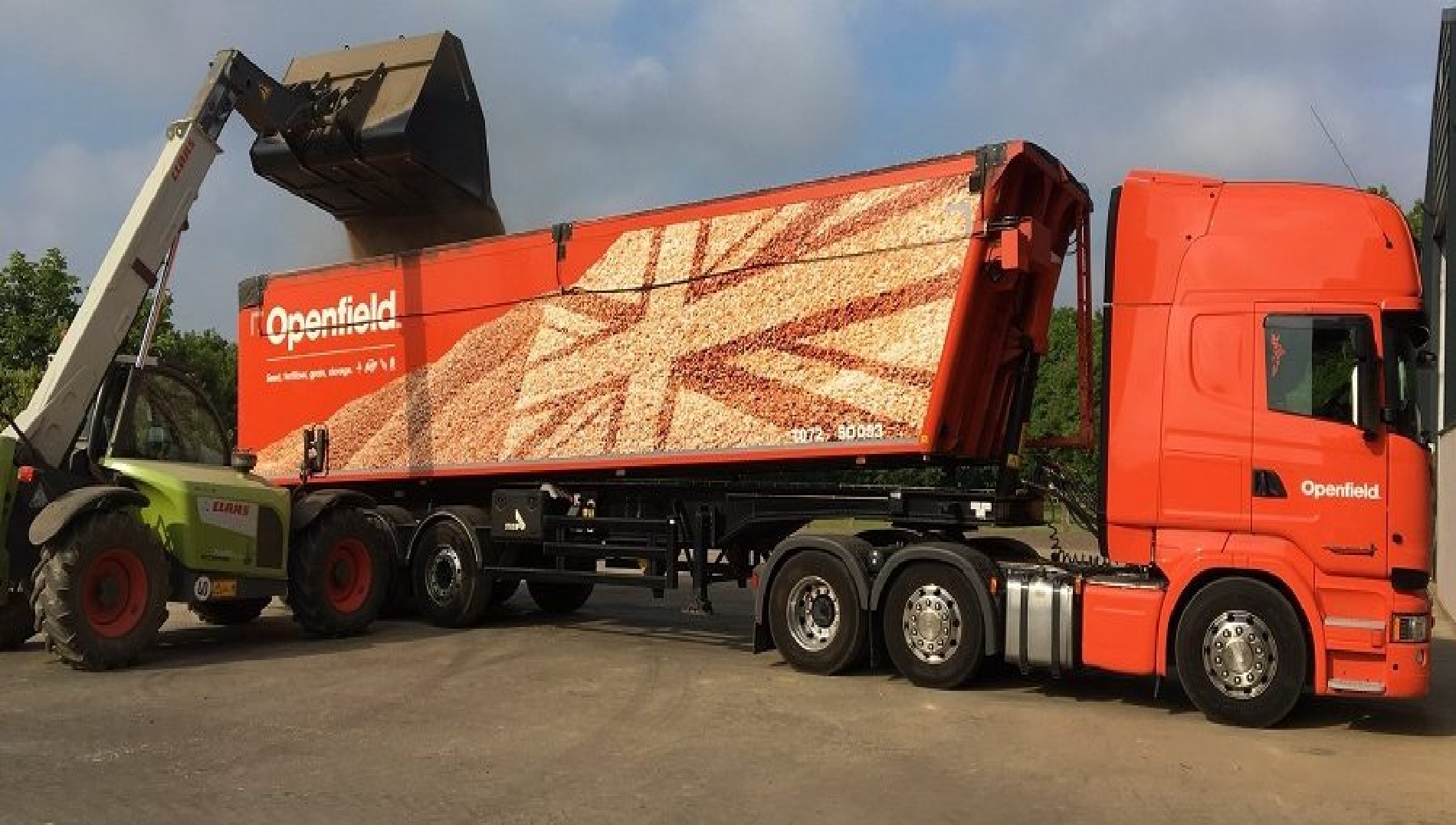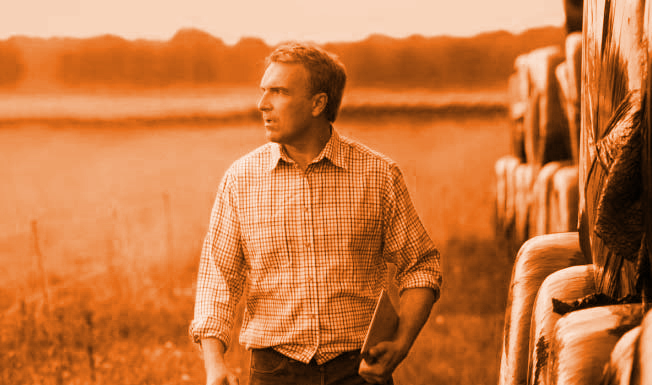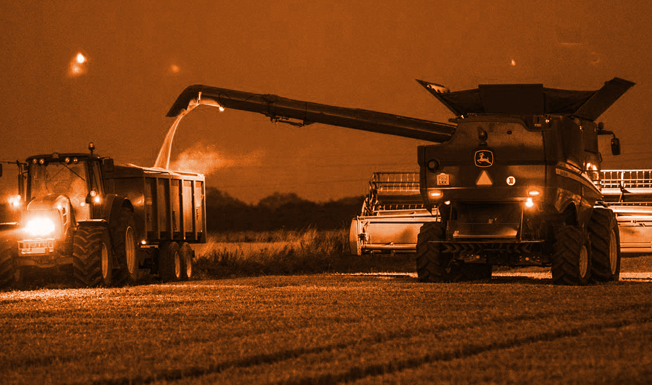Better buying, better selling – Tools to tackle the turmoil
Few harvests in living memory have brought such upheaval upon growers as this one. With further uncertainty on grain markets in months and years to come, CPM speaks with Openfield about how to manage it. It’s critical cashflow doesn’t dictate your grain marketing, especially this year.
By Tom Allen-Stevens, editor of CPM Magazine.
If you’re looking at a disheartening heap in the barn, you’re not alone. Harvest 2020 looks like being a crashing disappointment on many fronts, with a national wheat crop down from last year’s 15M tonnes to just 10M tonnes predicted to come from the UK’s fields in 2020, according to Openfield’s Richard Jenner.
“When the outcome of a harvest is disappointing, it’s very easy to talk yourself out of doing anything and focus instead on getting the next harvest established,” he notes. “While it’s important to have your market in mind before you drill the crop for harvest 2021, this year will be one of the hardest in living memory to get the marketing of the current crop right. So time taken to explore your options now is time well spent.”
The first issue to address is how best to release cash available from that disappointing heap, and Richard points out many growers will be in a vulnerable position. “Those funding next year’s crop on this year’s poor returns may find resources are stretched. It’s critical cashflow doesn’t dictate your grain marketing, though, especially this year.”
It’s exactly this scenario that Openfield’s Crop Fund was set up to manage. As the UK’s largest farmer-owned co-operative, it can arrange favourable rates with the country’s biggest lenders on behalf of the 6000 growers who sell grain through Openfield, he points out.
“Crop Fund is completely separate from our own working capital – we currently have an arrangement with Nat West set aside to provide substantial funding. This is made available for those who wish to draw down early on the grain they have sitting in the barn, or in central storage.”
The fund is available to growers who sell grain through Openfield and the amount you can draw down is related to the total tonnage you commit. Once you’ve done so, you can borrow up to 50% of its value from 1 August in that harvest year. After the grain’s been sampled and final tonnage agreed, up to 65% can be drawn down from 1 October, and this can be increased to 80% once the grain is collected or processed at a central site.
“The fund’s been running for a number of years and was specifically set up to allow growers to buy seed, fertiliser and sprays for the next harvest without having to accept a poor deal for grain that’s in the barn to pay for it. A lot of members have found it invaluable when their Basic Payment is delayed, for example, and it’s up to you what you spend the money on.”
The rate of interest is 4% over base, while some central storage members benefit from a lower rate. So why would you choose Crop Fund over a bank?
“We find growers like the flexibility and the ease. There’s no arrangement fee and you can pay it back any time before your grain is sold and funds released, with interest payable according to the exact length of time you borrow the money. It’s also very simple to set up.”
This is managed through Openfield’s portal, Insight. Once a contract is agreed, this shows up in your account, along with the amount available through Crop Fund. “If and when you want to draw down funds, it takes a couple of clicks and the money is transferred up to a week later,” says Richard.
Crop Fund may come in particularly useful for those with barley to sell this harvest. “We know there’s a larger crop, but we’re yet to know how Brexit will influence the market as the 31 Dec deadline approaches. Growers could consider selling forward with a carry and using Crop Fund for cashflow requirements, rather than risk suffering a blow from what could be a very volatile market.”
He recognises there may be growers who have suffered a considerably poor harvest and will be looking to invest in a larger 2021 crop to compensate – such as where areas that failed to establish have been fallowed. “Here, even with Crop Fund, growers may struggle to finance end of season costs next year, so we’re looking into whether we can make 2021 funds available two or three months earlier than usual.”
Another issue that may be facing growers is where they’re set to under-deliver on a contract or commitment, and Richard urges them to talk to their farm business manager as early as possible to ensure any penalties are minimised. “Marketing through a pool is often the best way to manage this exposure. Those who deliver 100% of their commitment get the full value for their crop, while any contract losses are shared on an equitable basis between those who fall short.”
Looking forward, he’s equally keen growers have their eyes on harvest 2021 and put in place plans to manage not just the volatile market, but crops within the rotation that have proven to be unreliable. “Oilseed rape has been an issue for some time now, and it’s best to be conservative with your estimates of overall yield,” Richard advises.
“It’s still a good idea to spread your marketing risk, committing up to a third of your expected rapeseed early, but take a judgement on whether you will have a crop, and don’t sell forward until you’re confident you won’t be ripping it up. One option for OSR is to commit an area early on, rather than a tonnage, which is something we’re considering for wheat and barley, too.”
He’s a keen advocate of pools as one of the best ways to get a good average price from the market. Forward prices for the harvest 2020 crop have already fluctuated by as much as £35/t from the Nov 2019 low to a high during lockdown, he points out. “One tool that always performs well is a tracker – the price available for new crop wheat was £158/t in early August, for example, against a spot price of £150/t. There’s also the option of a late-marketed pool, which reduces your exposure to pre-harvest speculation.”
Richard notes that growers’ attitude to risk is a very broad church, so the best tools to manage this will be very much an individual choice. But he stresses that getting the fundamentals of grain marketing right will tip the market in your favour. “The first is to plan ahead – look at what options are available and have a strategy that’s tailored to the risk you’re prepared to take.
“But the key aspect is to know your market. With Brexit, it’s likely the UK will become more domestically focused and the best destinations for your wheat may shift, perhaps going in unexpected directions. Time taken to understand your market, especially local intakes, is time well spent,” he concludes.
Grower feedback shapes new app
A new Openfield app now allows members to view their Insight account through a smartphone. Launched earlier this month (September), the app gives access to services identified as favourites, such as contracts, Track My Truck, futures prices, seed selector and there’s now a new handy chat function.
“We’ve worked with a group of farmers to develop the functionality of the app – we do all the design in-house, so the world’s our oyster in terms of tailoring it to exactly what growers want,” explains Mike Goodyear, head of IT at Openfield.
Accessible on a tablet or phone and available for both iOS and Android devices, growers can view three years’ worth of account details, including movement periods, contract prices and tonnage.
The loading schedule, for instance, brings up all planned collections, including variety, tonnage, timing and haulage contact details. “Information on each and every collection allows farmers to plan their time much more effectively,” says Mike.
This is further refined through Track My Truck, the app launched last year and now subsumed within the Insight app. With this you can anticipate when a lorry using Openfield’s tracking tool is on its way to the farm. Set an email or text alert to let you know exactly how far away a collection is from the farm and you can make sure there’s no waiting around to load up.
Farmers can also use the app to access the London wheat futures. “There’s a new chat function which allows members to send and receive messages from their farm business manager, credit controller or farm service co-ordinator. FBMs can set up chat groups – a bit like WhatsApp. The chat function keeps all these conversations together giving you a ready record of what’s been discussed.”
Openfield’s seed sector is also available through the app. This interactive tool can help narrow down your choice of seed varieties by answering a few quick questions, such as rotational position, soil suitability, drilling window and end market. Price alerts and a new fertiliser selector tool are due to be added soon, adds Mike.
The developments have been refined with the help of the Openlink grower focus groups, co-ordinated by Openfield member engagement manager Ed Hastie-Smith. “We have groups in the south, west and central England regions, and plan to expand,” he explains.
Set up last year, the meetings usually take place face-to-face. “Feedback on the app has come through virtual meetings, though, as a result of COVID-19, as the app is something members have been requesting for a while.
“Farmers really want feedback as soon as possible on loads of grain they send off farm. The importance of up-to-date information on loads and commitments came back as the top requirement, with Track My Truck proving a popular feature.
“Growers want to be able to access their contract details, too. Live pricing and seed selector are seen as useful additions.”
Going forward it’ll be growers who’ll be in the driving seat directing how the app develops, notes Ed. “Unsurprisingly, one of their main concerns is Brexit, so information on where their grain is going to, putting them more in touch with the market, is what they’re looking for. It’s nice to have a connection with a loaf of bread or a pint of beer, so maybe one day that’s something the app will tell them.”
Is there anything I can help you with?
“Alexa, Open Field Portal. What’s my load schedule today?” Believe it or not, if you have an Amazon Echo device and utter those words in its presence, Alexa will almost instantly reply with the information you’re after.
The ‘skill’ for Alexa has been developed by Openfield and has just been launched, believed to be one of the first Alexa skills designed specifically for an agricultural platform. It offers those with an Insight account access to a range of information without even having to click open a web browser, let alone find the page you’re after.
“It’s another tool we’ve developed in-house as a result of feedback from farmers we’ve worked with who want easy access to account information,” notes Mike Goodyear.
For those with an Amazon Echo, you use the store within the linked Alexa smartphone app (available on iOS and Android) to download the Openfield Insight skill. That allows the device to recognise the command “Open field portal”, and once you’ve been through a one-off process of linking to your Insight account (with the email address), you can then access a range of services.
“You can find out your load schedules and fund values as well as current market prices – the latest information on LIFFE wheat futures is available on command,” adds Mike.
Where the tool develops from here depends on uptake and how it’s used, he says. It currently only works with Alexa, not Siri, Cortana, nor Google Assistant. It can be accessed direct through the Alexa app on your smartphone, although the connection is more reliable through the Amazon Echo, he notes.
So will Alexa soon be advising on the best market opportunity for your wheat? “You can access your chats through Alexa, but we think it will always be best to have the conversation itself with an actual person, such as an Openfield farm business manager,” assures Mike.
Better buying, better selling
To remain at the forefront of arable farming and to maximise the value from every hectare of crop grown requires a keen understanding of the grain market, the seed to supply it, and the fertiliser to feed the crop. Through this series of articles, CPM is working with Openfield to provide a market insight and help farmers to focus on these major business decisions to ensure better buying of inputs, and better selling of the produce.
Openfield is Britain’s only national farming grain-marketing and arable inputs co-operative, owned by over 4000 arable farmers. Openfield’s team works with a total of 6000 farmers to supply some of the biggest and best-known names in the British food and drink manufacturing industry.
But there’s more than just grain to Openfield, supplying seed and fertiliser, providing grain storage and offering expert advice on grain marketing and risk management. This delivers innovative supply chain solutions to its farmers and clients.




